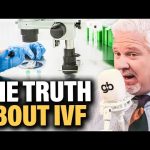Seattle, often celebrated for its tech innovation, coffee culture, and artistic vibrancy, is undergoing a transformation that reflects both its challenges and its ambitions. Mayor Bruce Harrell’s 2025 State of the City address highlighted significant strides in addressing long-standing issues such as crime, homelessness, and urban development. While the city’s reputation for gray skies and introverted social dynamics persists, recent initiatives are reshaping Seattle’s narrative, aiming to make it a more livable and connected city.
Mayor Harrell’s administration has focused on revitalizing public spaces and reducing crime, with notable successes. Crime rates in downtown Seattle have dropped significantly, with violent crime down 14% and emergency dispatches reduced by 15%. The Unified Care Team has also made progress in addressing homelessness, achieving a nearly 80% decrease in tent encampments since 2022 and connecting over 1,800 individuals to shelter services in 2024 alone. These efforts reflect a commitment to restoring public safety and dignity while fostering a sense of community.
Urban development has also taken center stage, with projects like the pedestrianization of Pike Place Market and the Northern Lights initiative to revitalize Aurora Avenue North. The mayor’s vision for a car-free Pike Place Market aims to enhance one of Seattle’s most iconic landmarks by prioritizing pedestrian access and cultural experiences. Meanwhile, the Northern Lights project seeks to transform Aurora Avenue into a vibrant mixed-use neighborhood, addressing long-standing issues of noise pollution and urban decay. These initiatives underscore Seattle’s push toward sustainable and inclusive urban planning.
Housing affordability remains a critical focus for the city. Under Harrell’s leadership, Seattle has added over 5,000 units of affordable housing since 2022, including nearly 1,500 units of permanent supportive housing. Plans for redeveloping the Fort Lawton Army Reserve Center will add an additional 500 homes and 22 acres of green space. Streamlining permitting processes and doubling zoning capacity are further steps aimed at addressing the city’s housing crisis while accommodating future growth.
Despite these advancements, Seattle continues to grapple with its reputation for social isolation—often referred to as the “Seattle Freeze.” While some attribute this to cultural norms or weather-induced introspection, others see it as an opportunity for community-building initiatives. Efforts like expanding light rail access and creating vibrant public spaces aim to foster connectivity among residents while reducing reliance on cars. These projects not only enhance mobility but also encourage social interaction in a city known for its reserved demeanor.
As Seattle evolves, it balances its identity as a hub of innovation with the need to address pressing urban challenges. Mayor Harrell’s administration has set ambitious goals that align with the city’s progressive values while tackling practical concerns like safety, housing, and infrastructure. While there is still work to be done, Seattle’s trajectory suggests a renewed optimism—a city striving to harmonize its unique character with the demands of modern urban life.




